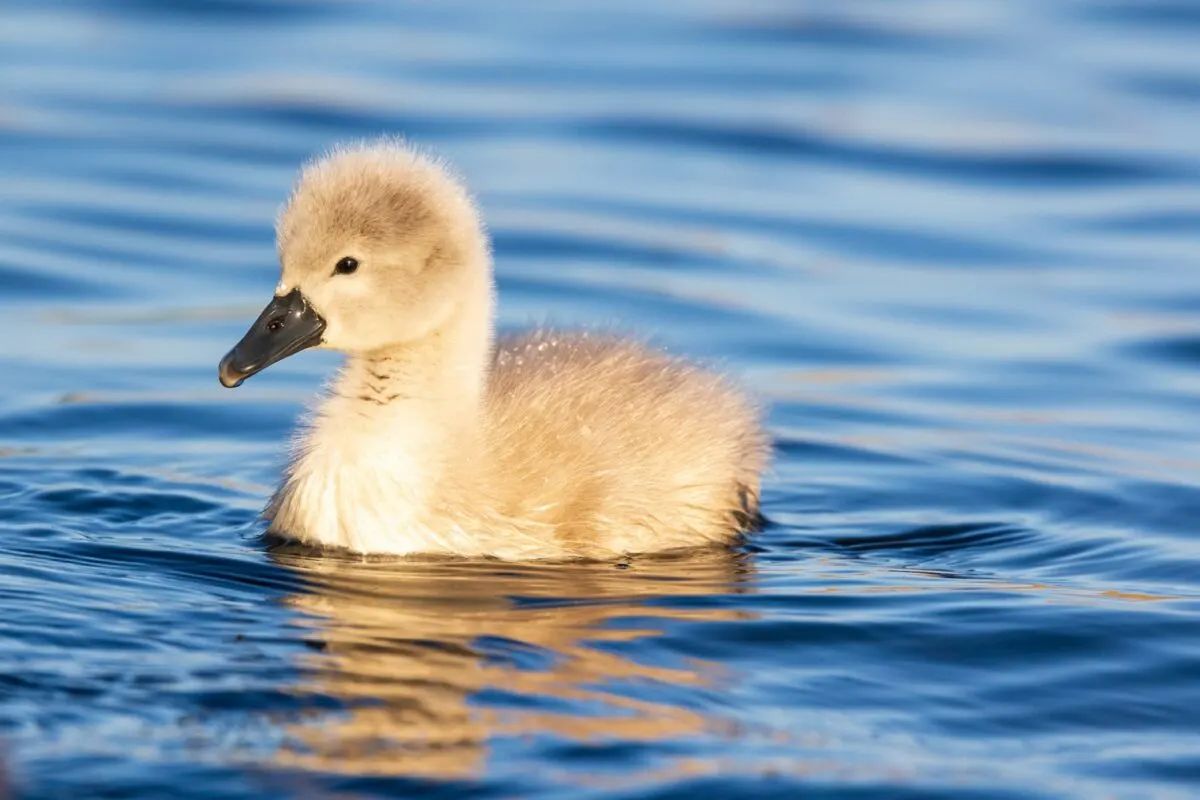Swans are a graceful, strong, and beautiful species of bird that reflect pure elegance. From the moment they’re born, swans captivate us with their elegance and curiosity. But just like people, the young have much to learn about life and growing up.
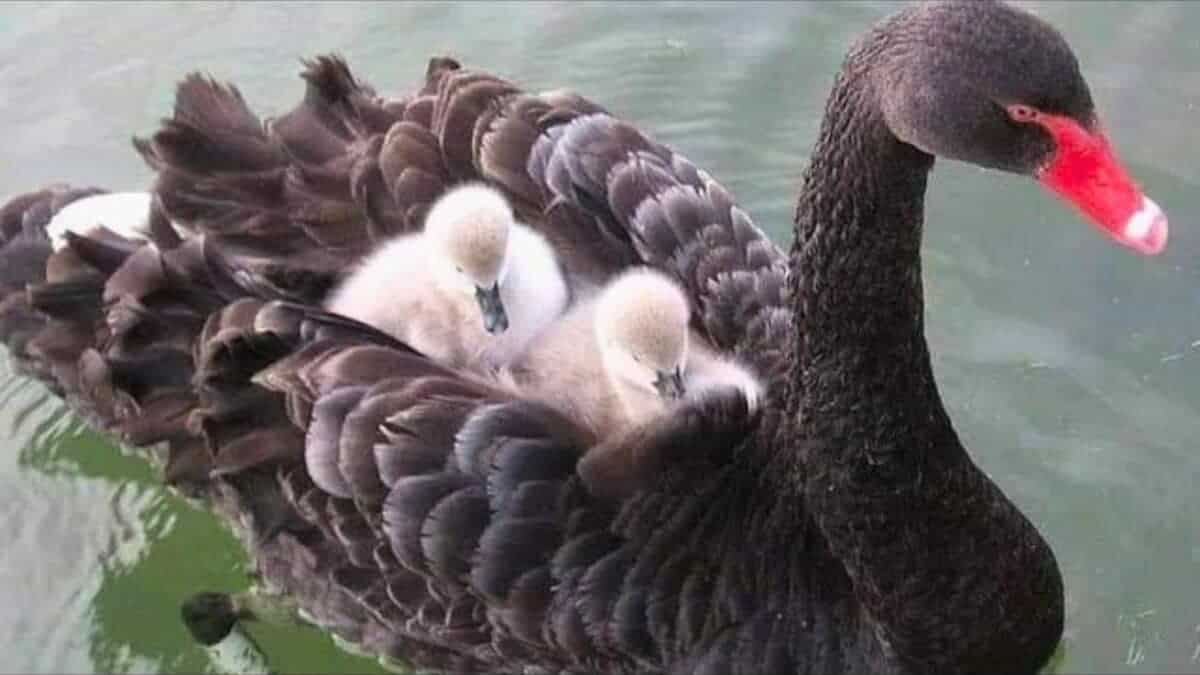
Throughout history, these animals have inspired cultures around the globe with their unrivaled beauty. Everyone has heard of them, but not everyone may know just how fascinating they are – apart from gracefully swimming around ponds in parks or down rivers.
We’ll explore how each stage of a swan’s development is special – from baby, also called cygnets, braving their first swim to adolescent birds finding their place in growing flocks. You’ll gain new insight into these majestic creatures while discovering what makes them unique – and maybe even find a few ways you can help young swans thrive in your local park.
Getting To Know the Young Swan
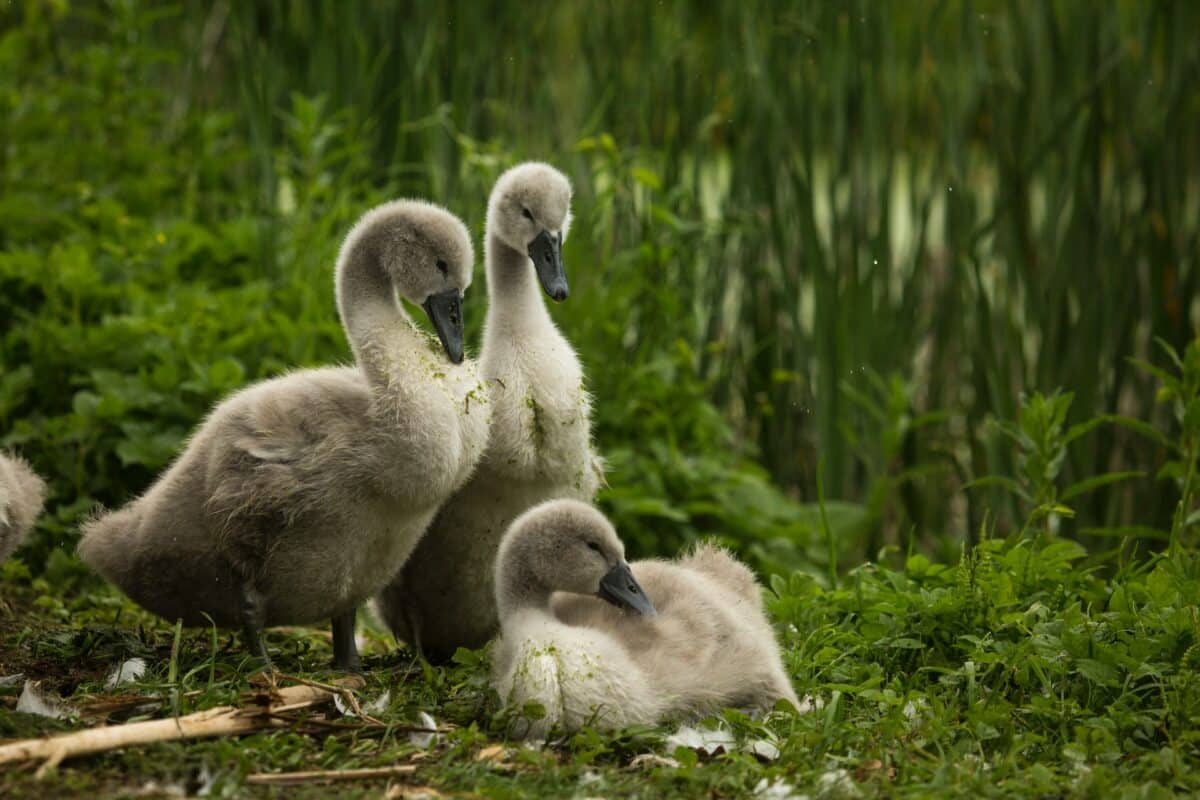
Young swans, which go by the name of cygnets, are the adorable offspring of swans. From the moment they hatch until their first molt (around 8-10 months of age,) these gentle birds are covered in soft gray feathers which darken over time.
One way to identify young swans is by their yellow beak and feet, which eventually become orange as the bird matures. Cygnets will stay close to their parents for protection until they can care for themselves.
Generally, their eggs take 32-41 days to hatch. Adolescents will begin feeding themselves when they’re around a week old while mom and dad teach them how to survive in the wild. It’s a captivating sight – one that you will remember.
Take a look at: Swans Defend Against Invading Raccoons
Identification of Young Swans
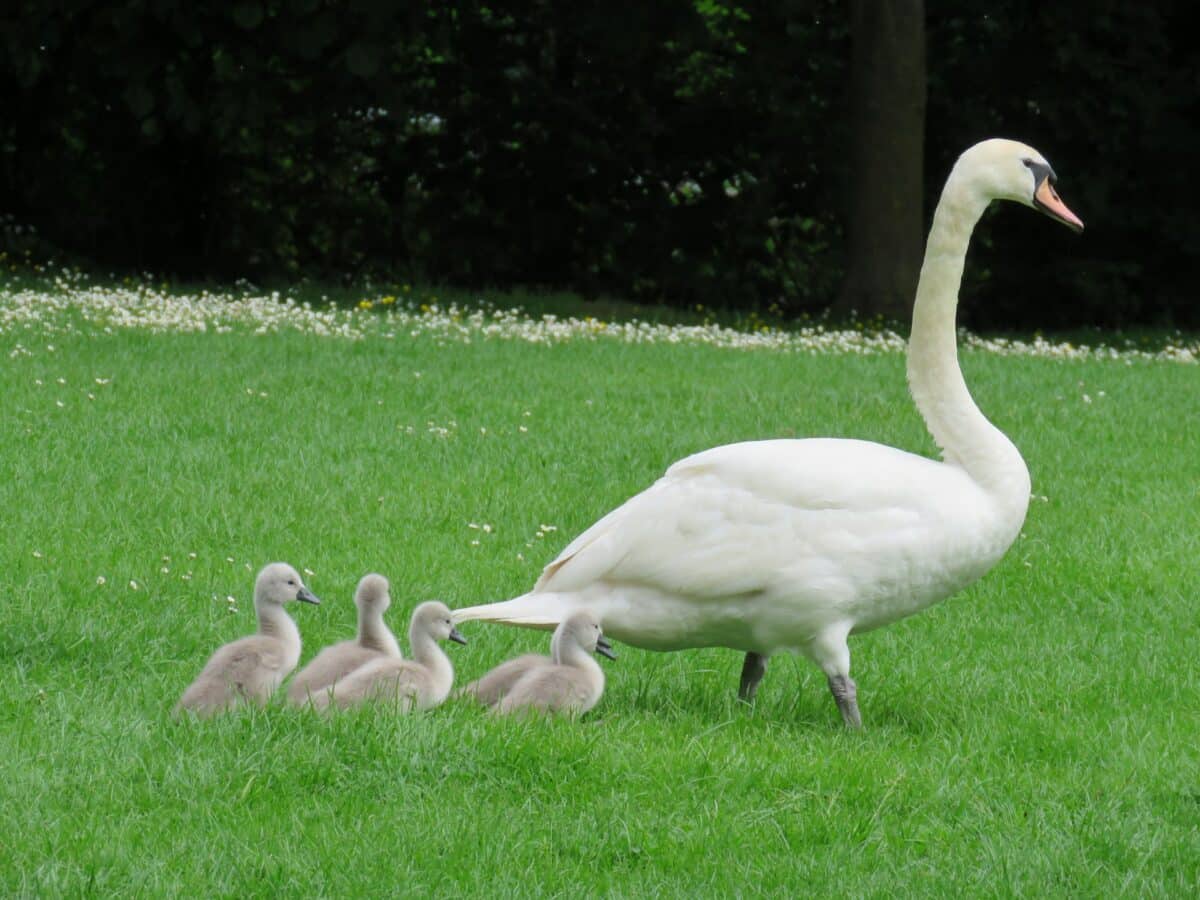
Identifying young swans can be both a fascinating and rewarding experience. As with most bird species, their appearance changes as they mature. At first glance, young swans often appear less majestic than their adult counterparts. You can distinguish them by their shorter neck and considerably smaller bill size.
Additionally, soft downy feathers will often obscure their true coloration for a few weeks before they molt into the glossy white feathers of an adult. Checking the markings around the bill can also help distinguish age. Cygnets usually have black bills with yellow or orange banding at the base, which fades over time on adult birds. With some practice, these subtle signs can help you determine if that majestic bird soaring toward you is an adult or a teen!
Characteristics of the Young Swan
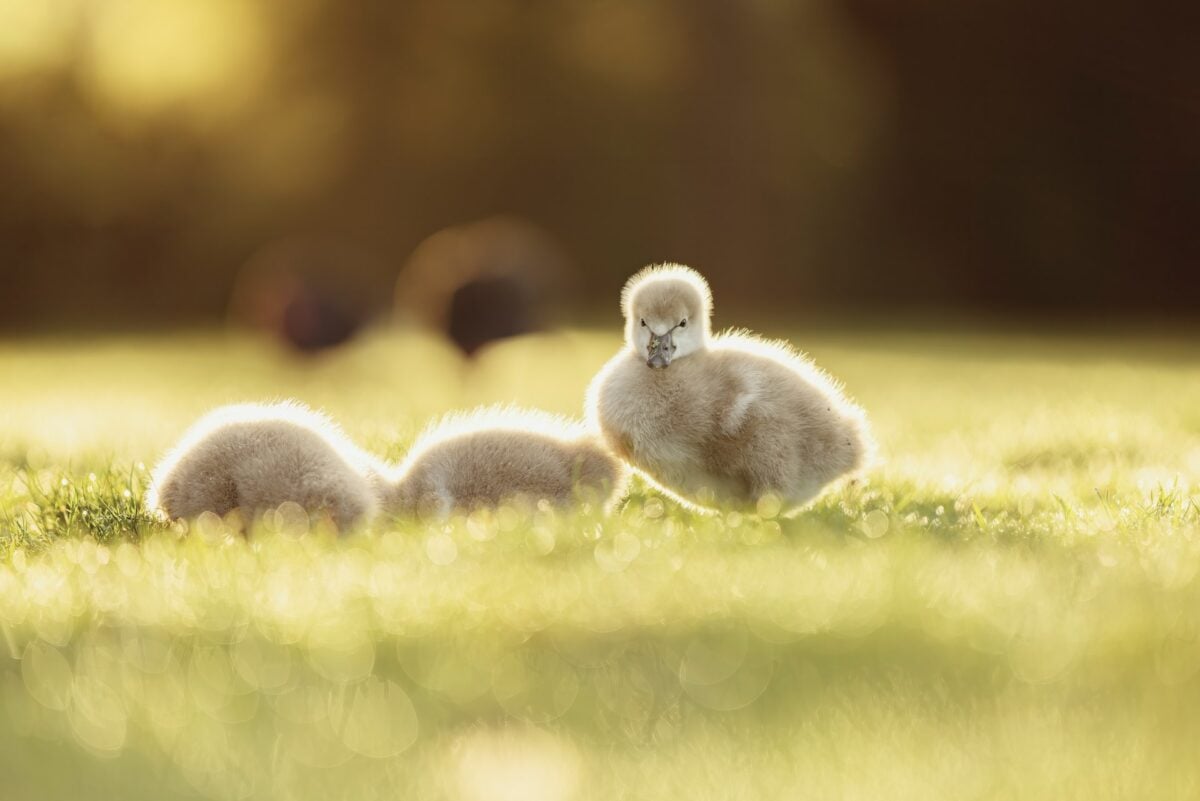
Cygnets exhibit distinctive characteristics with their fluffy feather coats and yellow beaks. They are social creatures and normally swim closely with their family group and tend to keep within the same flock of birds even after they reach maturity.
Newly hatched baby cygnets rely on their parents for care, protection, and food during the first two weeks of life. During this period, a young one’s beak is light in color and does not develop its darker appearance until it reaches adulthood. Cygnets possess strong voices despite being such small birds, which helps them to communicate any potential threats from predators.
They also gain strength in numbers to repel larger animals by creating a wall of birds between them and an intruder. Young birds may look fragile, but these baby birds can create quite a loud racket when needed.
Different Types of Young Swans
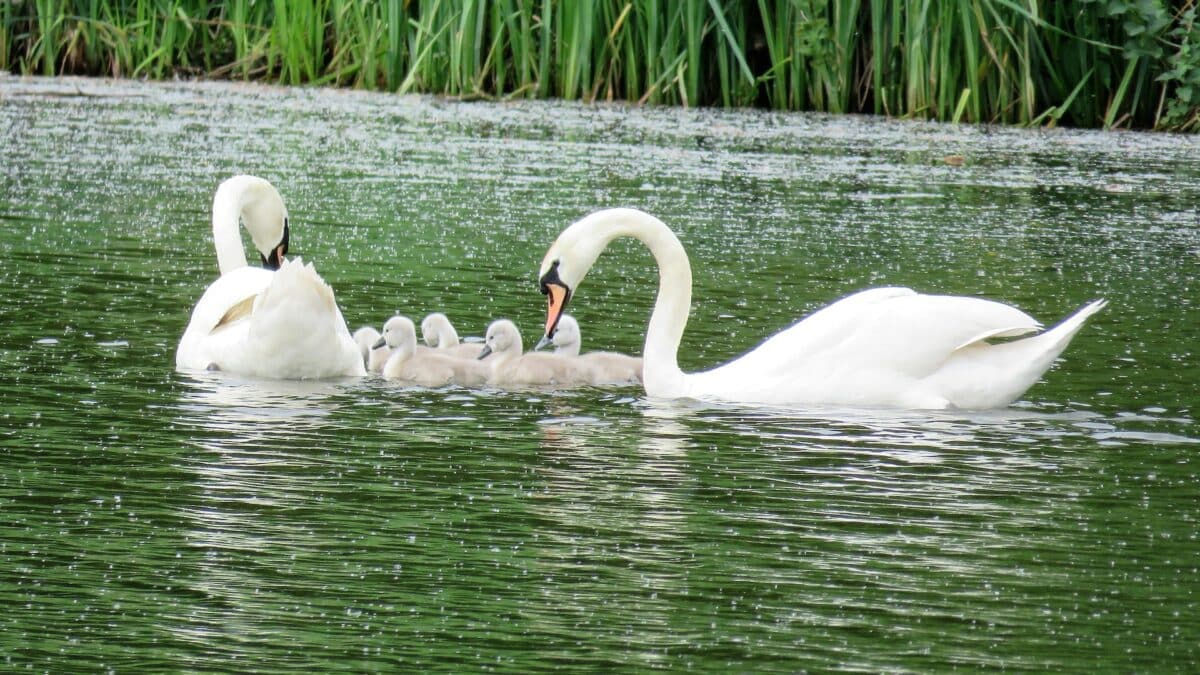
A common species belonging to this bird family is the Mute Swan, which can be identified by its predominantly white feathers and large orange bill. Trumpeter Swans also feature in many parts of North America, distinguished by their white feathers, black beaks, and famous trumpet-like call. Other species include Whooper Swans and Black Swans, both marked by yellow bills with a hint of orange or pink around the base.
No matter which type of young swan you observe, this animal remains an iconic symbol of elegance and beauty.
There are several types of young swans found across the globe.
- Mute Swan
- Trumpeter Swans
- Whooper Swans
- Black Swans
Let’s take a closer look at each one of these swans:
#1 Mute Swan
Mute swans are a species of wildfowl native to Europe, Asia, and Northern Africa. They’re one of the most majestic waterfowl that inhabit many freshwater ecosystems worldwide. The national bird status of several nations represents their strong cultural attachment to various countries. Interestingly, their name doesn’t imply that they lack vocal calls. They make noises that sound like hissing and snorting. However, mute swans are quieter than other swan species, which might be the reason for their name.
Look for their black bill and the orange knob at the top to distinguish them from other species. The adults are white, whereas the younger ones have greyish feathers and red bills. Unlike other waterfowls, such as tundra and trumpeter swans, these birds cannot fly over long distances due to their heavy weight.
#2 Trumpeter Swans
The trumpet swan, scientifically known as the Cygnus buccinator, is a majestic waterfowl native to the United States and Canada. As its name implies, this avian creature is well-known for its characteristic trumpeting call.
It is the largest species of swan in North America, with adults measuring between 4 feet 6 inches and 5 feet 5 inches long. Notably, though, a heavy-set adult male could even exceed 5 feet 11 inches. The Trumpeter Swans’ wingspan can reach up to 8 feet and weigh around 23 pounds. While they inhabit wetlands and other areas with slow-moving shallow lakes, they sometimes venture into nearby grasslands or meadows in search of food.
These creatures are omnivorous, feeding on plants such as pondweeds, wild celery, and aquatic invertebrates like insects and small crustaceans. This species experienced a sharp decline in population due to hunting during the late 19th century; however, conservation efforts have helped restore their numbers. According to some studies, their populations are, thankfully, increasing once again.
#3 Whooper Swans
The majestic Whooper Swan is the national bird of Finland and Japan and is renowned for its looks and elegance. These large white birds live in wetlands, riverbanks, and lakes across Eurasia, North America, and sometimes even further afield. They measure up to 55 inches in length with a wingspan of around 80 inches – double that of an average swan – making them easily identifiable among other species.
Although they only weigh around 15 pounds, they are heavily muscled and prepped for their annual migrations between wintering grounds in warmer climates and breeding grounds nearer the Arctic Circle. Needless to say, it’s an incredible feat. Since Whooper Swans frequently live near humans, they have become an important part of many cultures worldwide – especially in Finland, where folk art often features these birds!
#4 Black Swans
The Black Swan stands out from all other swans due to its color and is a species that epitomizes splendor. Though the traditional image of this bird is black with the odd white feather, certain specimens have pale grey wings, elusive bluish plumage, and an almost red flush in the feathers.
It is also a symbol of adaptation to change with its impressive flying prowess that can soar miles in a day. Native to Australia, the Black Swan is also an aspirational symbol among many Australians who look up to it for resilience and grace in times of adversity.
Swan Chicks Are Covered In Downy Feathers
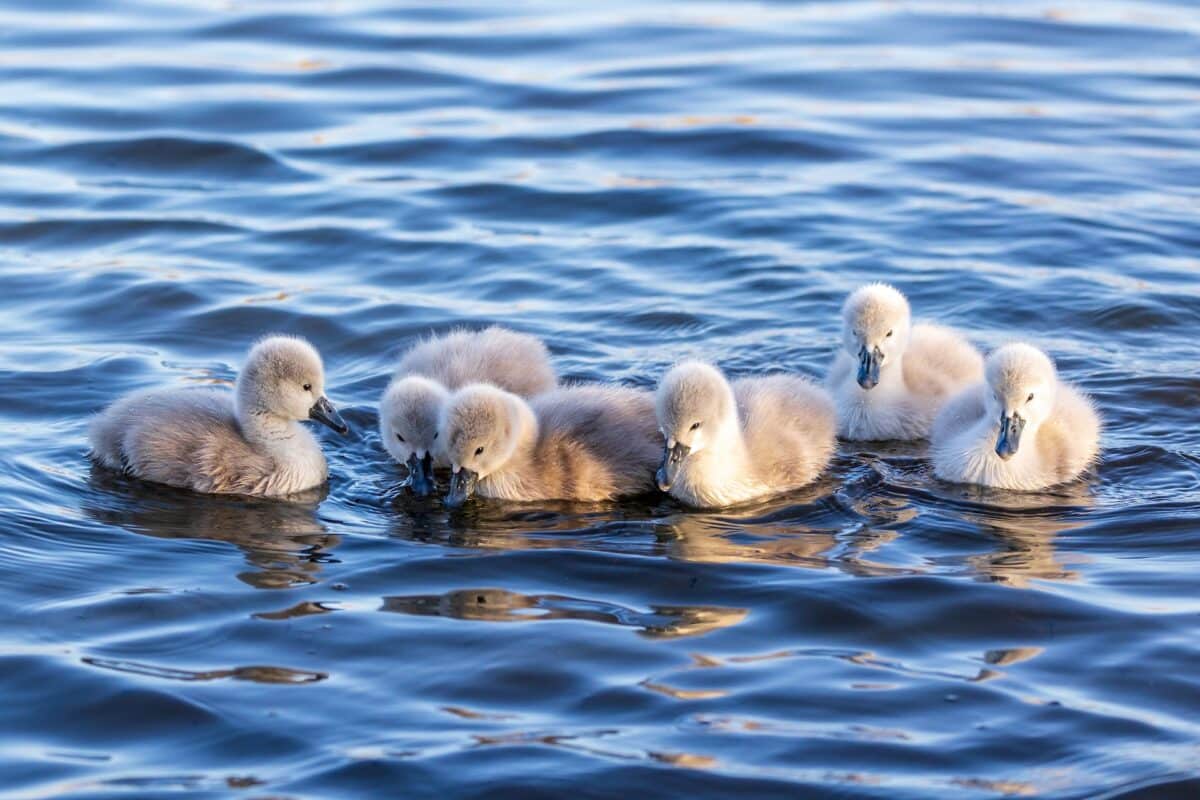
Cygnets display a beautiful sight of pure sweetness when they are born. They enter the world already wearing their fluffy coat of downy feathers, providing them with the necessary warmth and protection from the elements.
As they age, these feathers are replaced with efficient long-distance flight feathers. It is truly amazing to observe nature this way, as swan chicks display the classic example of growth and evolution through morphology over time.
Swan Chicks Can Swim and Dive
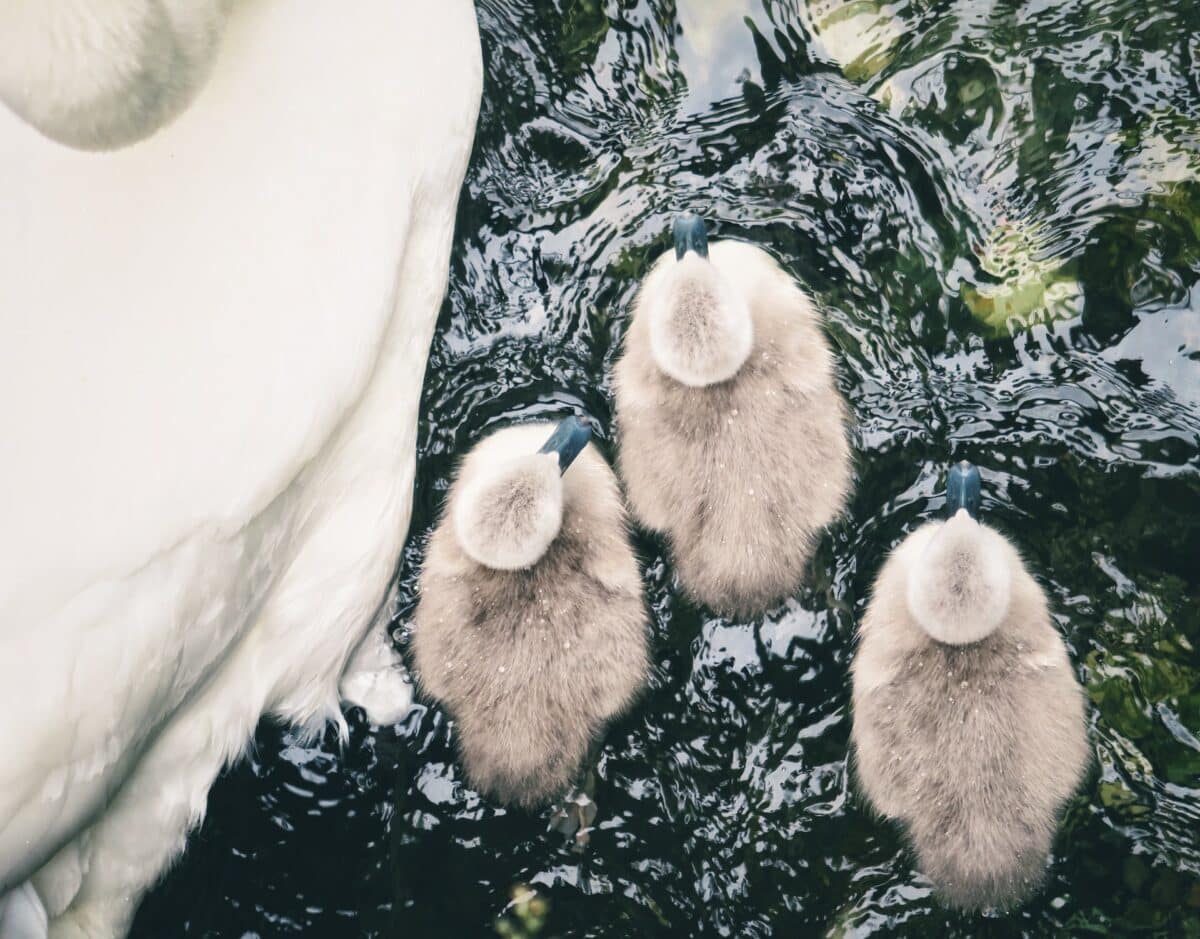
It is truly amazing to witness the skills that a young cygnet possesses. They can swim and dive within hours from the moment they are hatched.
Intuitively they can recognize which direction they need to take to locate food sources or a safe place to rest and hide from predators.
Nature has created magnificent creatures who can instinctively hone in on their basic needs and act swiftly – what an enthralling sight. The talents they possess as newborns far exceed those of human offspring.
Chicks Learn To Forage For Food From Their Parents
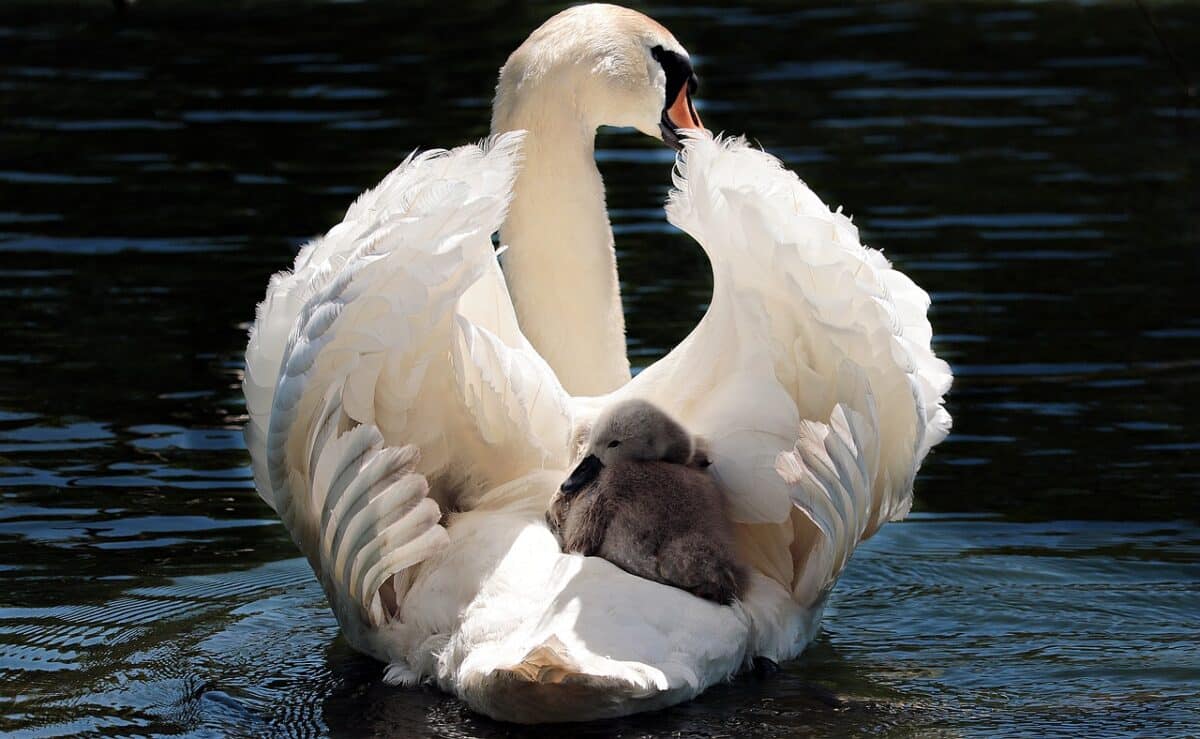
Young swans can become independent more quickly thanks to the valuable guidance they receive from their parents. Swans have a unique relationship where the parents will guide their chicks around bodies of water and show them how to forage for food, teaching them the skills they need to survive and thrive in the wild.
This parental training is an essential part of their development process, allowing them to become proficient hunters who can seek out insects and plants while keeping away from predators.
For How Long Do Young Swans Stay With Their Parents?
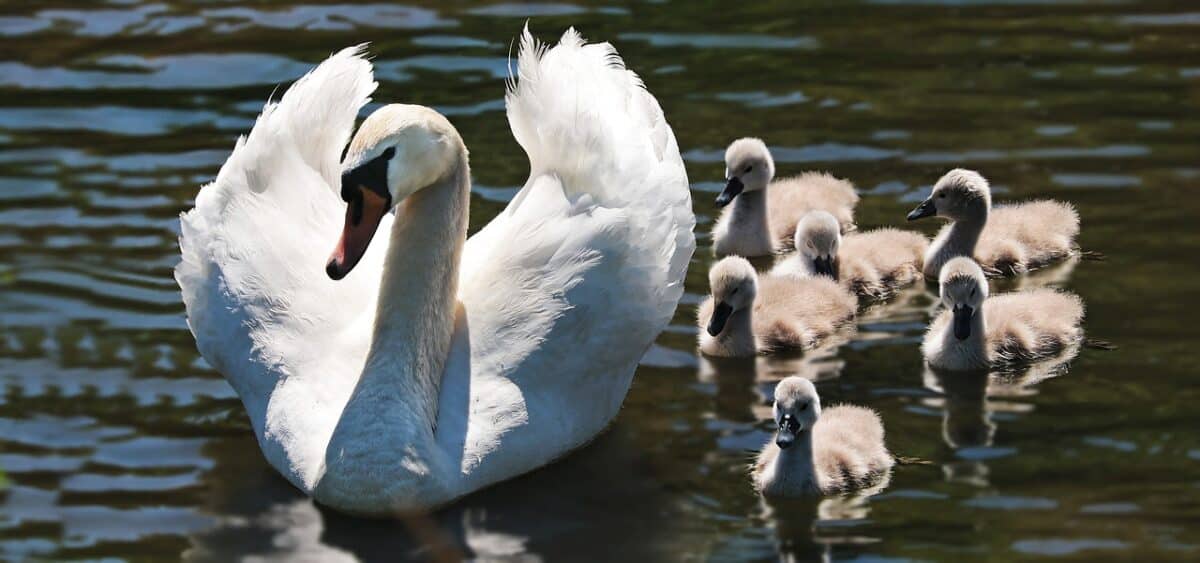
As part of their growth and development, cygnets rely on their parents for protection and guidance. They follow their parents wherever they go and learn important survival skills, such as:
- Migration
- Building Nests
After two years, the nestlings are ready to strike out independently. This period of dependency is essential to the long-term survival of the entire species, as it allows them to gain experience while still in a safe environment.
Although it is difficult for parents to say goodbye, this separation marks the start of their journey into adulthood.
Sexual Dimorphism in Young Swans
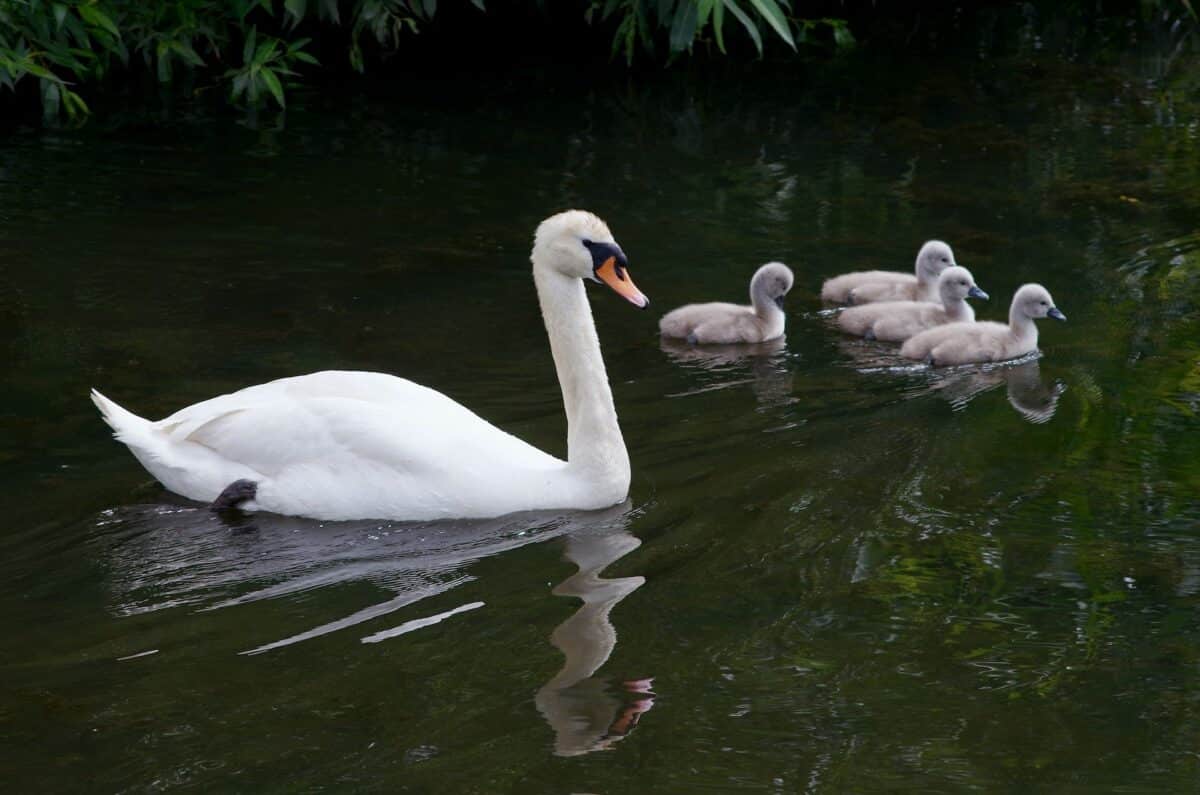
Male and female swans look nearly indistinguishable when they are young, making it difficult to identify the gender of immature swans.
As they grow, however, differences in behavior become more apparent. For example,
- Males will typically vocalize more than females and may fight other males more often.
- In some species, a physical distinction can also develop as males tend to acquire a deeper chest while mature females gain more body weight.
- Males commonly build nests, while females are typically responsible for incubating eggs.
- Although male and female swans may have similar appearances when young, adults show several distinct behaviors that allow them to be differentiated from each other.
Lifespan
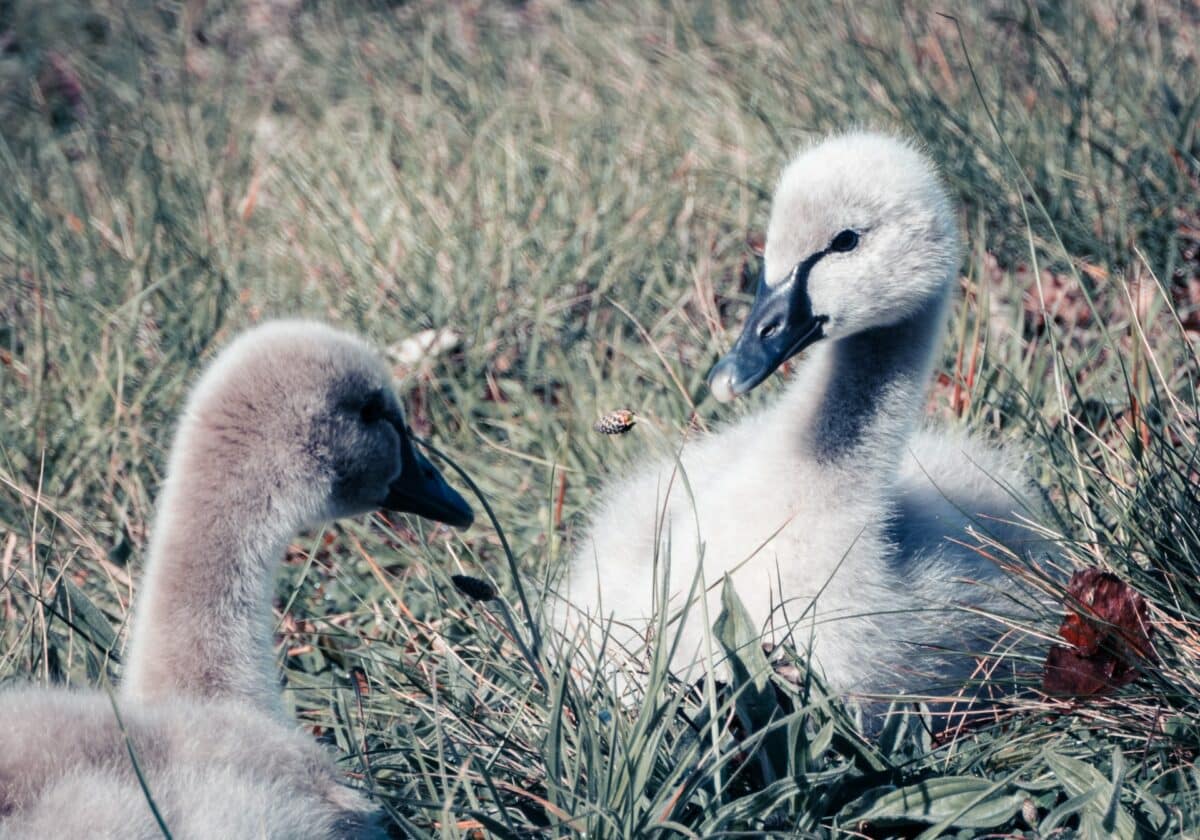
Did you know that these regal birds have an impressively long lifespan? Generally speaking, they can live for up to 25 years. Certain species can live for even longer, such as the Mute Swans, which frequently reach 30 years of age.
The oldest swan ever recorded died at the age of 40 years old. However, it is highly likely that it was actually even older than this, as its exact birthdate could not be established.
This means that the swans you spot in your local park have probably been there for a substantial amount of time. If you’re not too old, it might even be the swans you fed as a child.
How To Behave Around a Young Swan
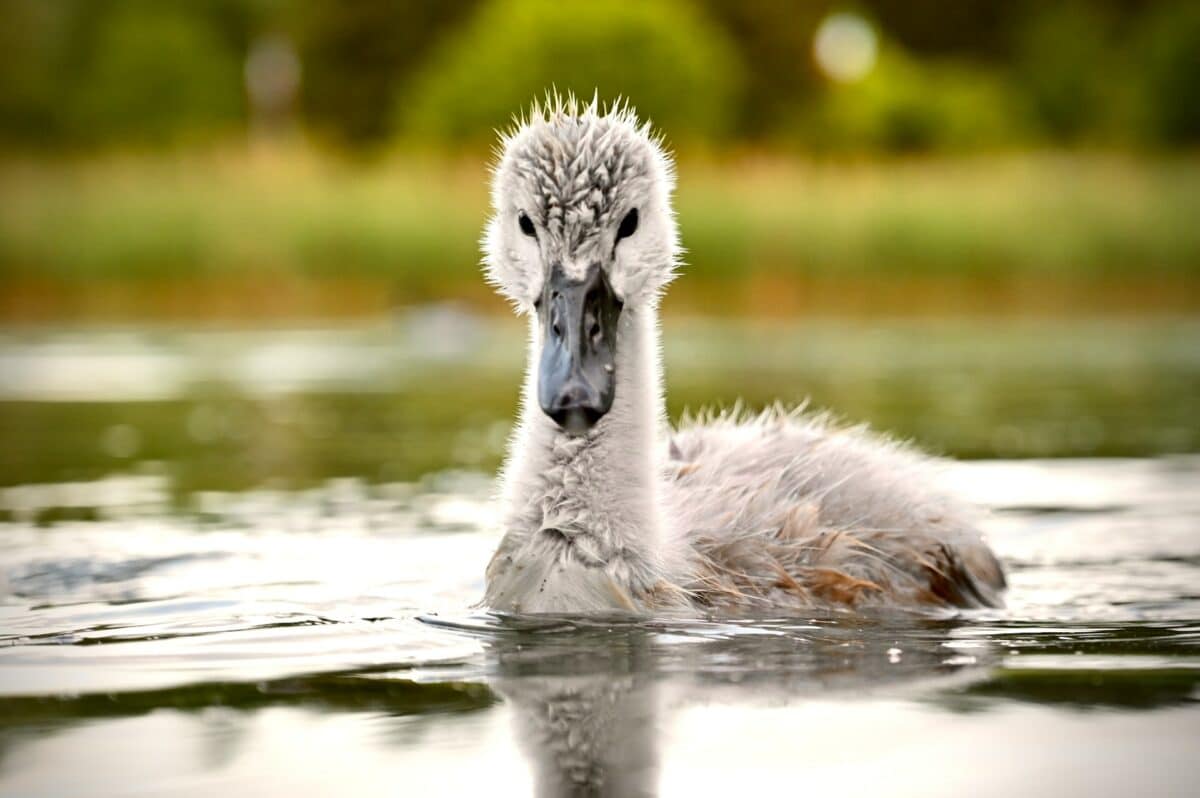
When approaching a young swan, it is important to be extra conscious of your behavior and energy.
- Staying calm and avoiding sudden movements can help prevent any scared or aggressive reactions from the swan.
- Speak in a low, gentle voice when you are close enough to the swan that it can hear you.
- Avoiding eye contact with the animal can also help create a more relaxed atmosphere.
- It is important never to feed a wild swan as this could harm its health or lead to reliance on humans. If you’re in a park, you should look out for signs of rules and regulations.
- If you keep your distance and follow these tips, interacting with a young swan can be an enjoyable experience for both parties!
Where Can You Find Young Swans
Finding a young swan can be both tricky and exciting. The best way to locate young swans is to find an area where adult swans have been spotted, as the young will always stay nearby their parents for protection. Likewise, the swan mom and dad will rarely let their hatchlings out of their sight.
Usually, you will spot a whole family of swans at the same time, with the smaller ones tagging along. Remember that if you spot a young one near its parents, it is not safe to approach them too closely, as the adults are extremely protective over their precious babies.
If you spend some time observing them (quietly and peacefully), you will probably be able to witness the young swans mimicking their parents’ behavior as they learn the ropes of life.
Although it takes some patience, witnessing baby swans in nature can be an incredibly calming and soothing experience.
How Young Swans Travel
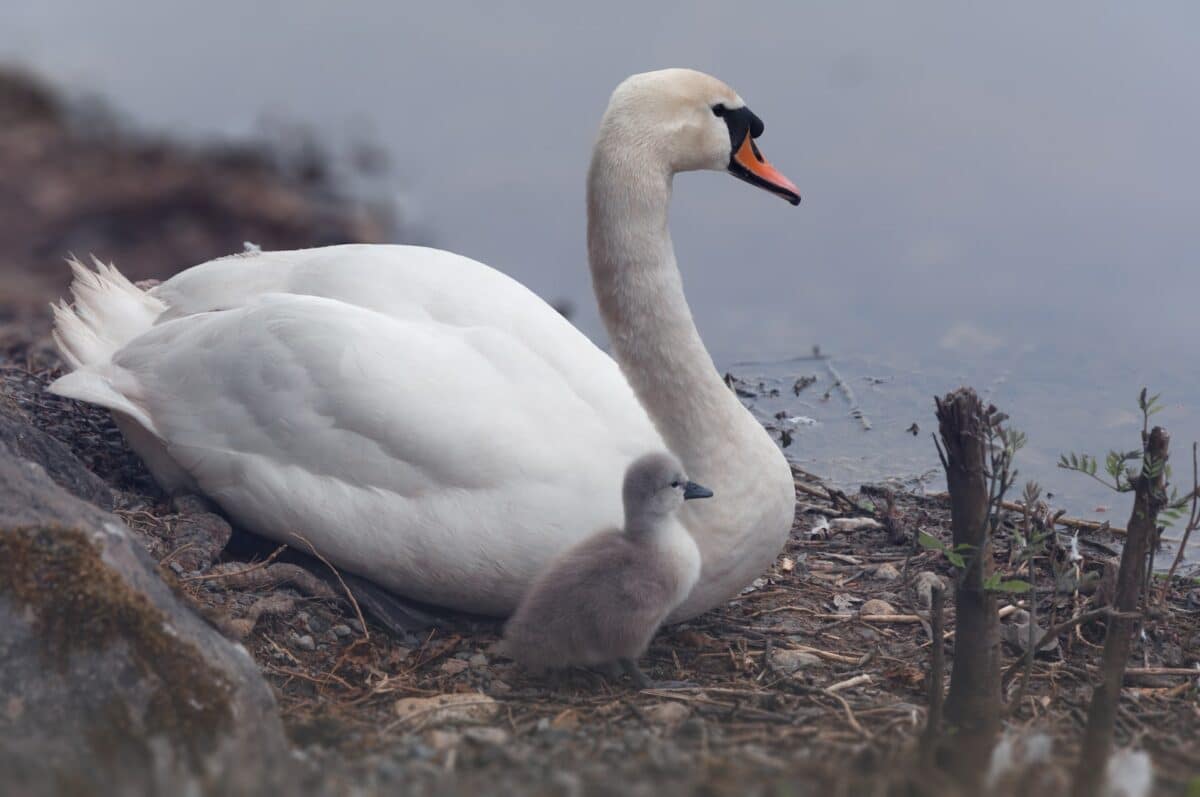
Young swans are frisky birds that love to explore and wander. They develop the instinct to leave the family nest and education while still young – usually between 10 and 12 weeks old. Adult swans mate for life, and young swans only find their nesting mates when they reach maturity, which can take up to five years.
To search for a mate and experience all the many wonders around them, these adventurous birds will embark on migrations of thousands of miles until they find the perfect partner or location for a nest. Although time-consuming and demanding for these feathered travelers, it’s an integral part of growing up in the swan world.
Guidelines For When You Encounter An Injured Or Orphaned Young Swan
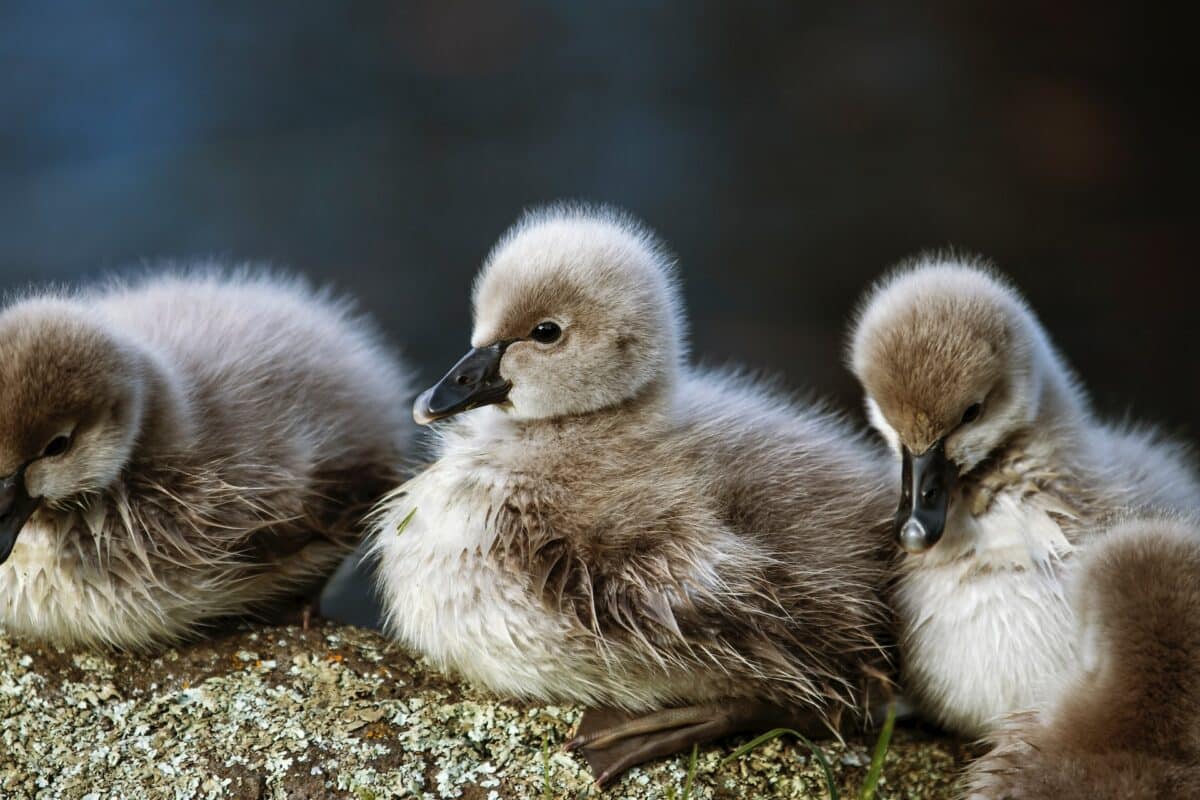
If you find an injured or orphaned young swan, the best approach is to contact a wildlife rehabilitator or rescue group. They are specially trained to handle these types of situations and will be able to provide care for the swan if necessary. Be sure to note its exact location, as well as its behavior, when contacting them for help.
Some key indicators that can help them assess the situation better are;
#1 How alert it is.
#2 Whether its feathers appear greasy, ruffled, or normal.
#3 Whether it appears dehydrated or malnourished.
Often the young swan can benefit from being left alone for short periods in their habitat, so before you take any action yourself, familiarise yourself with the situation before taking action.
The Young Swan: A Large Aquatic Bird
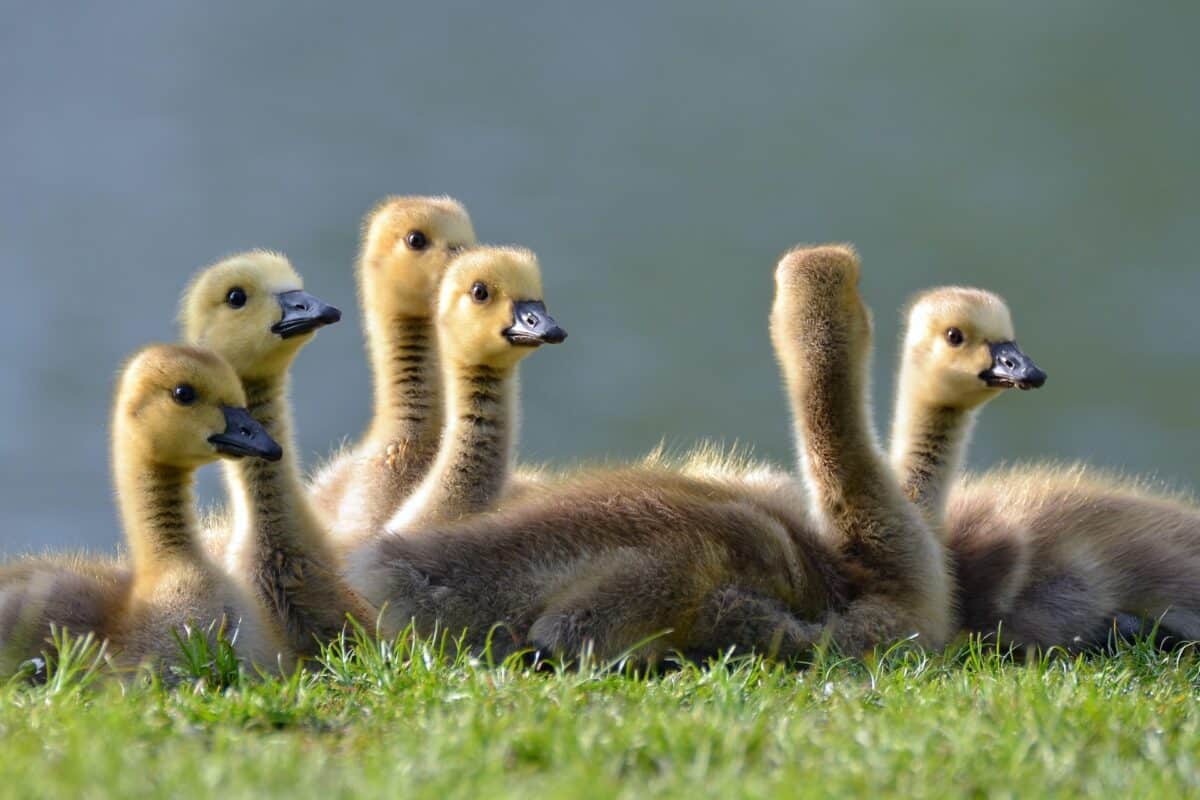
The young swan is one of the most majestic aquatic birds that can be seen across the world.
#1 It has a large wingspan and a long neck, giving it a graceful and beautiful look.
#2 Young swans are also calm and peaceful, allowing people or other animals to approach them without feeling threatened.
#3 When swimming or flying, their wings provide an impressive silhouette in the sky or on the surface of any body of water.
#4 Its soft cacophony of fluttering feathers is one of Mother Nature’s many musical tones that bring peace and tranquility all around them.
Truly, there is so much to admire about this remarkable bird.
Colors

Swans are an incredibly impressive species known for their regal demeanor and look. Adults can often be identified by their white color, setting them apart from juveniles, which are commonly gray or black.
Young swans will typically start to take on the white coloration of an adult around four years old and reach sexual maturity anywhere from two and a half to five years old.
While they may not look quite as stunning as they will when they’ve completed their maturation, juvenile swans are still fascinating creatures that deserve admiration.
Swans Can Be Monogamous Or Polygamous
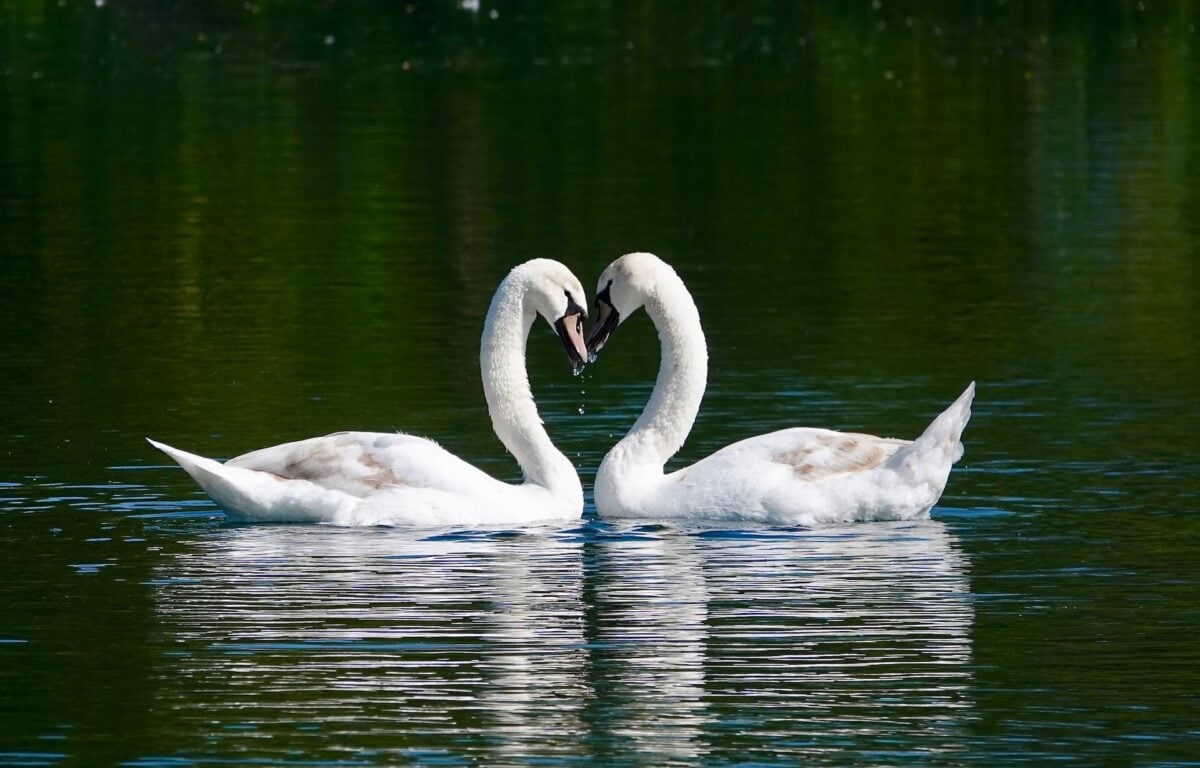
Young swans form lifelong bonds with either a single mate or multiple mates, meaning they can be either monogamous or polygamous. Both parents take on caring for their young together, demonstrating a commitment to their chosen partnership.
After hatching from their eggs, the adults teach their offsrping how to feed and migrate, helping them successfully grow and make it through the first year of life. During the days spent with their parents, the young learn valuable communication lessons to stay safe and thrive within a flock.
Due to the protection and guidance of dedicated parental figures, fledgling swans have a high chance of reaching adulthood.
Young Swans Are Omnivorous
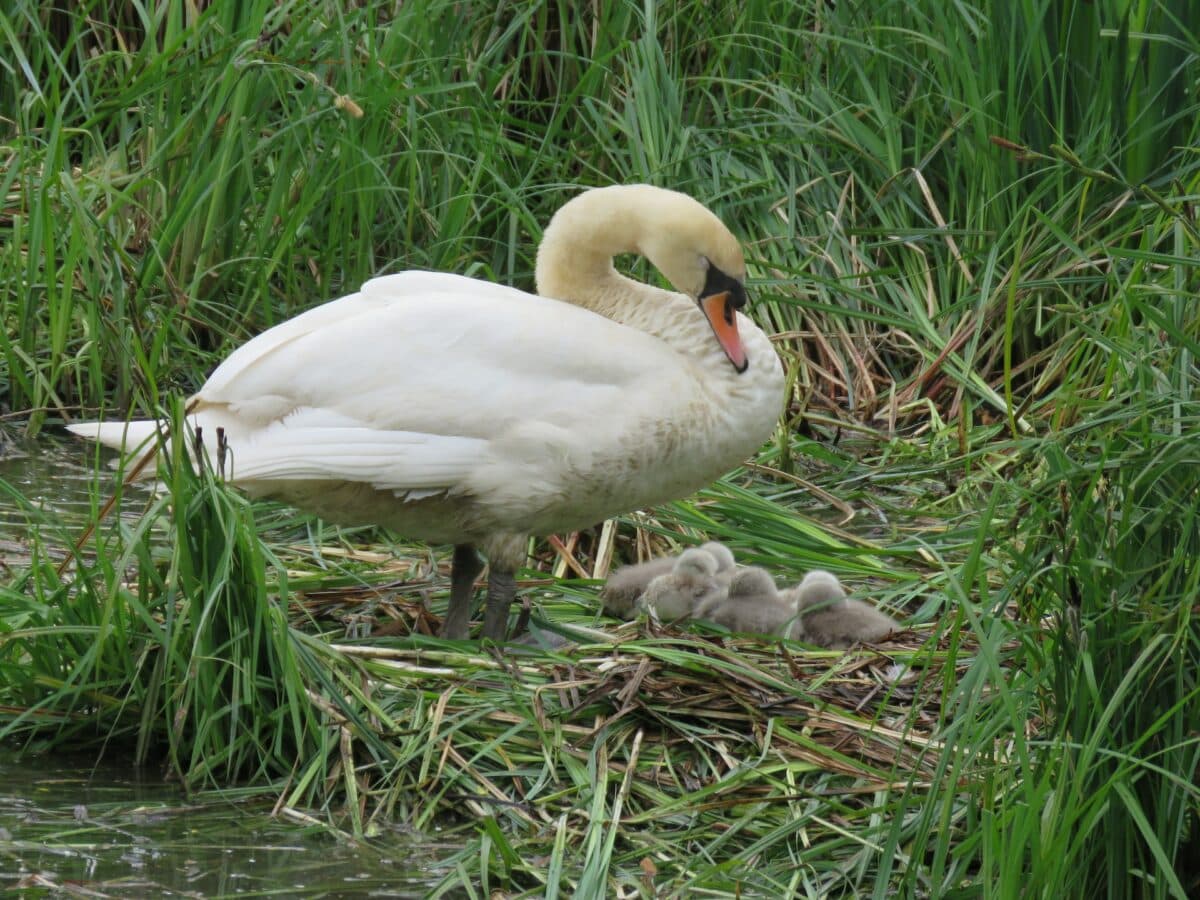
Young ones display an impressive range of dietary habits as they are omnivores consuming plants and animals. Swans still developing, such as cygnets and fledglings, often show an inclination towards the vegetarian diet of small aquatic plants, roots, shoots, and grains.
However, despite their primary inclination to a herbivorous diet, they also feed on insects, minnows, and crustaceans when given the opportunity.
Adults tend to have a more carnivorous diet, with most of their sustenance coming from insects, fish, mollusks, frogs, and crustaceans.
As cygnets grow into adolescent, their ability to digest protein-based food increases. It explains why an older adult swan has an equal carnivorous to herbivorous-consumption ratio.
Fun Facts About Young Swans
Swans are a majestic bird species renowned for the elegance of their powerful wings and the grace with which they move through the water. Some lesser-known but no less fascinating facts about swans have to do with their early lives.
Cygnets make a popping noise when they hatch, emitting an ultrasonic signal that only other baby swans can hear. Moreover, we often attribute dignity to swans due to the famous fable “The Ugly Duckling.”
As impressive as adult swans may be, it is amazing to think about the incredible strength and resilience their offspring show, even in the earliest stages of life.
Key Points
| Young swans, often called cygnets, are the adorable offspring of Mute Swans. |
| One way to identify young swans is by their yellow beak and feet, which eventually become orange as the bird matures. |
| As part of their growth and development, young swans rely on their parents for protection and guidance. They follow their parents wherever they go and learn important survival skills. |
| Male and female swans look nearly indistinguishable when they are young, making it difficult to identify the gender of immature swans. |
| Swans have a unique relationship where the parents will guide their chicks around bodies of water and show them how to forage for food, teaching them the skills they need to survive and thrive in the wild. |
| Young swans display an impressive range of dietary habits as they are omnivores consuming plants and animals. |
Conclusion
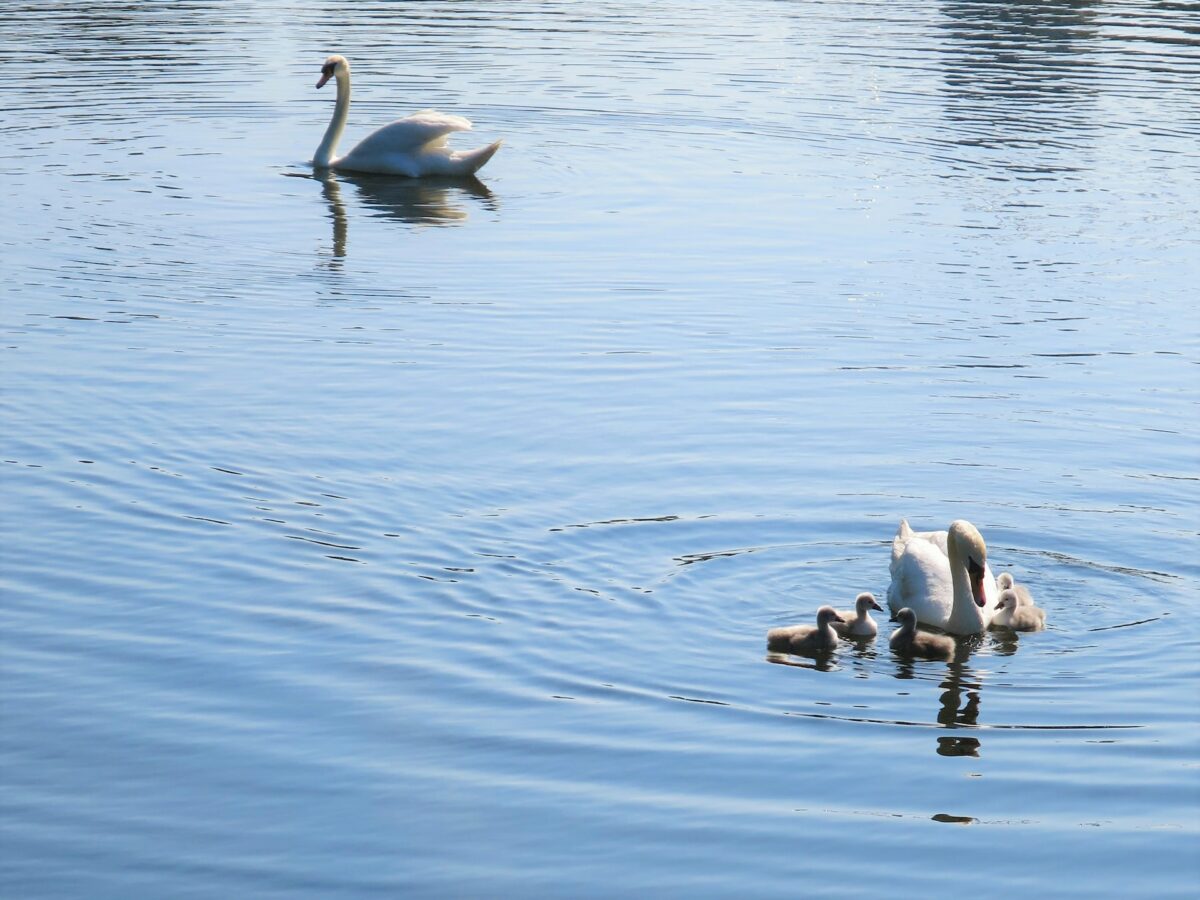
These majestic birds are amazing creatures that have inspired cultures all over the globe. From their unrivaled beauty to their graceful swimming, there is much to learn about these creatures.
Swans are truly fascinating animals. It is amazing to see how each stage of a swan’s development is special and unique. By understanding more about these creatures, we can appreciate them even more.
We hope that this guide has given you a new appreciation for these animals and that you’ll appreciate these incredible birds a little bit more the next time you come across them in your local park.
Thank you for reading this article! If you want to learn more about another adorable (and extremely affectionate) bird, take a look at our article about the Cockatoo. If you’d rather learn about birds of prey, read our comparison of the Bald Eagle Vs. Andean Condor.
Join our Forum for free today!


